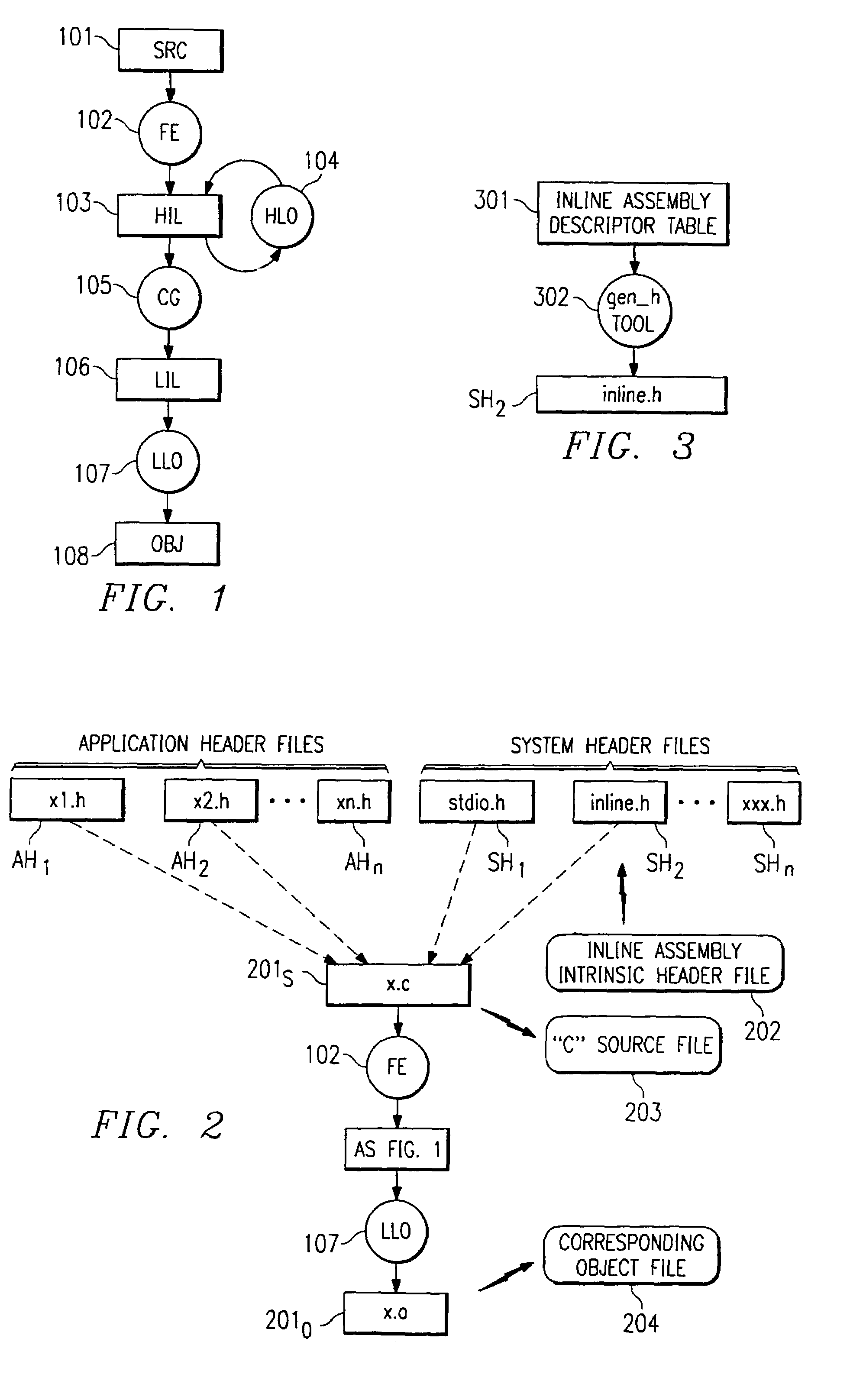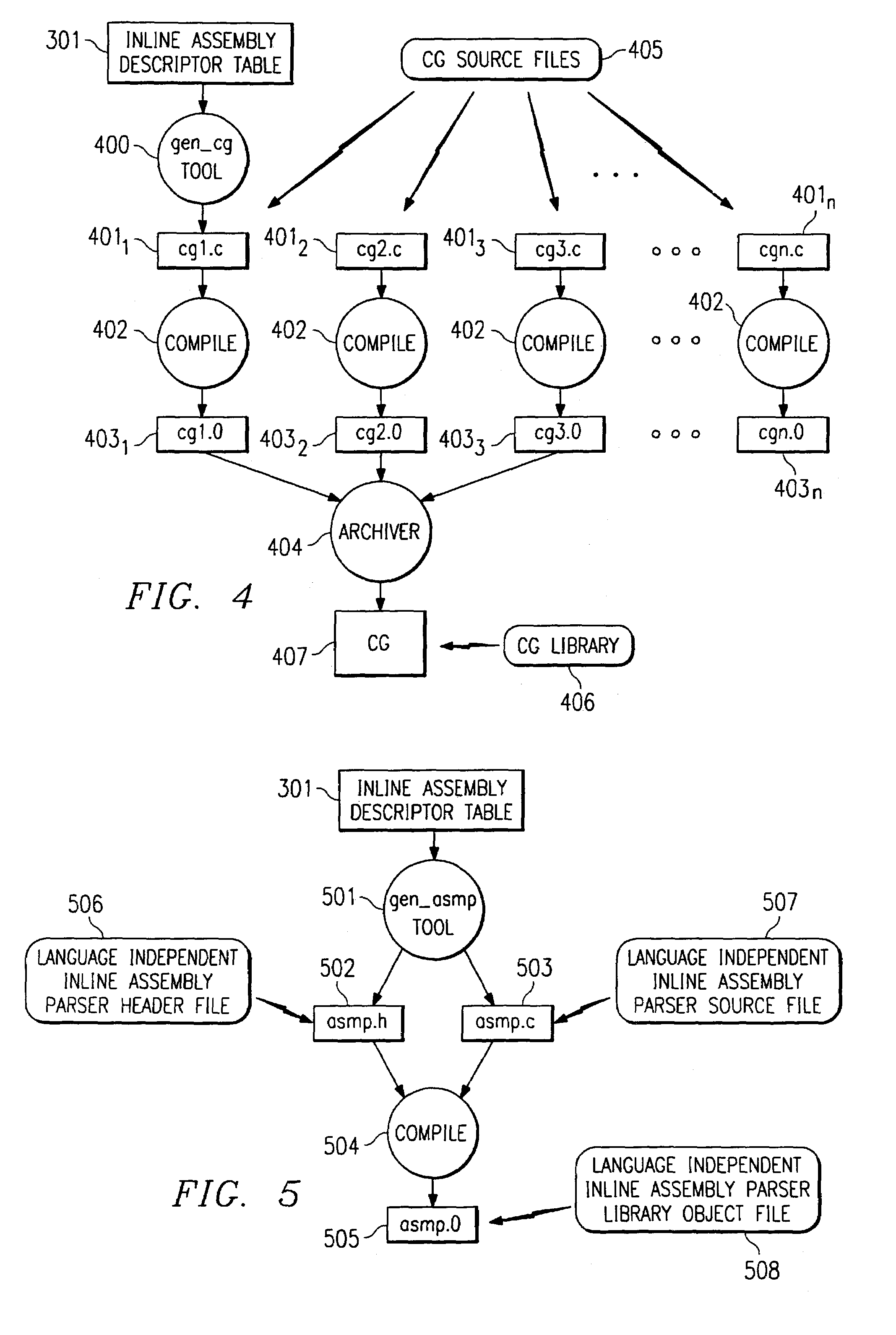Programmatic access to the widest mode floating-point arithmetic supported by a processor
a programming access and processor technology, applied in the direction of program code transformation, instruments, computing, etc., can solve the problems of inability to optimize assembly-coded machine instruction sequences along with the invoking routine, the overhead of procedure calls/return sequences, and the source language like c and c++ typically do not support constructs that enable access to low-level machine instructions. , to achieve the effect of facilitating reference to floating-point machines and reducing the need to modify compiler source cod
- Summary
- Abstract
- Description
- Claims
- Application Information
AI Technical Summary
Benefits of technology
Problems solved by technology
Method used
Image
Examples
Embodiment Construction
[0053]Turning first to FIG. 1, a typical compilation process is illustrated upon which a preferred embodiment of the present invention may be enabled. The compiler transforms the source program on which it operates through several representations. Source code 101 is a representation created by the programmer. Front-end processing 102 transforms source code 101 into a high-level intermediate representation 103 used within the compiler. At this high-level intermediate stage, the associated high-level intermediate representation 103 is advantageously (although not mandatorily) passed through high-level optimizer 104 to translate the representation into a more efficient high-level intermediate representation. Code generator 105 then translates high-level intermediate representation 103 into low-level intermediate representation 106, whereupon a low-level optimizer 107 translates low-level intermediate representation 106 into an efficient object code representation 108 that can be linked...
PUM
 Login to View More
Login to View More Abstract
Description
Claims
Application Information
 Login to View More
Login to View More - R&D
- Intellectual Property
- Life Sciences
- Materials
- Tech Scout
- Unparalleled Data Quality
- Higher Quality Content
- 60% Fewer Hallucinations
Browse by: Latest US Patents, China's latest patents, Technical Efficacy Thesaurus, Application Domain, Technology Topic, Popular Technical Reports.
© 2025 PatSnap. All rights reserved.Legal|Privacy policy|Modern Slavery Act Transparency Statement|Sitemap|About US| Contact US: help@patsnap.com



